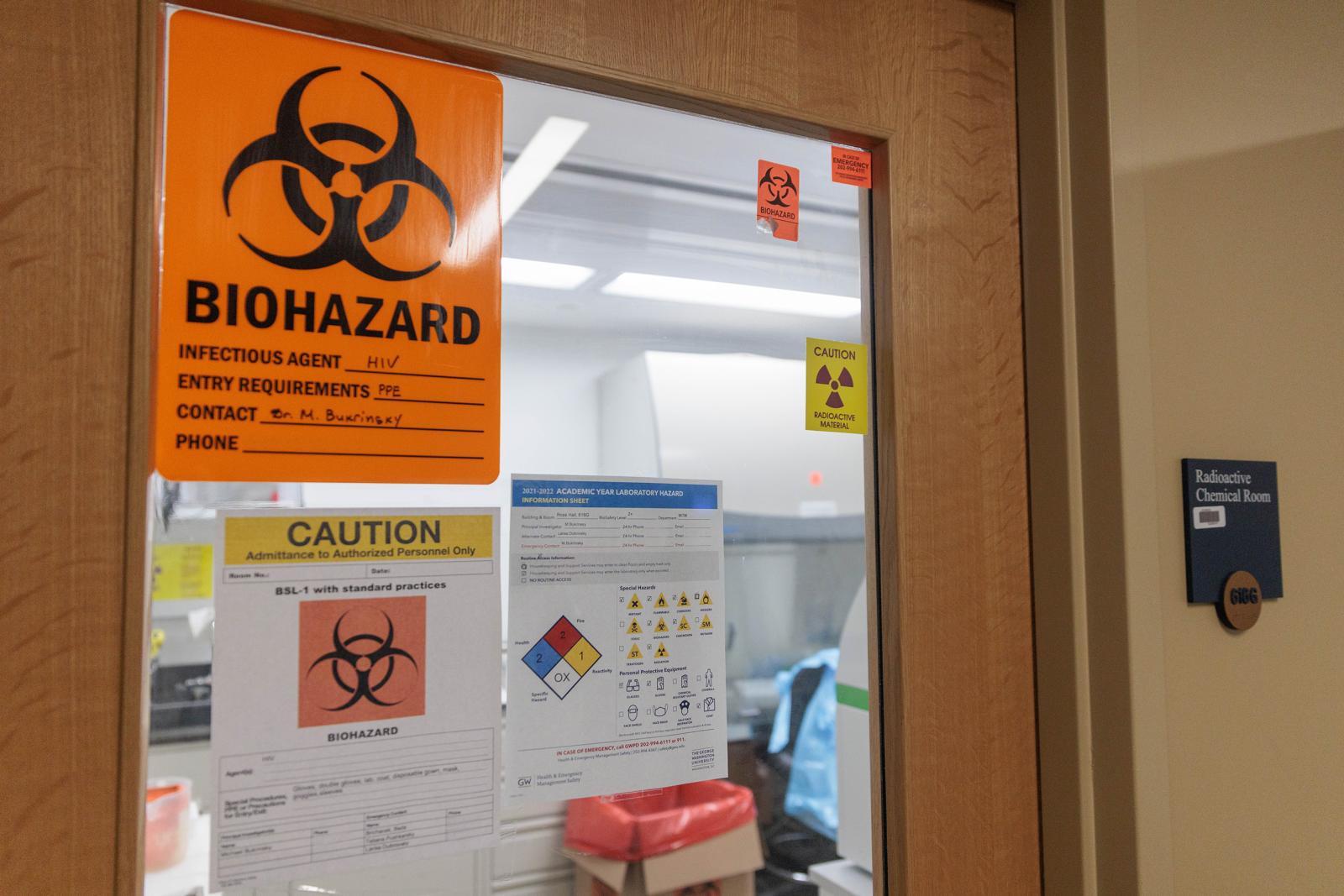Biosafety
The GW Biosafety Program assist in protecting faculty, staff, students, the community and the environment by addressing the safe handling and containment of infectious microorganisms and hazardous biological materials. The practice of safe handling of pathogens and their toxins in the laboratory is accomplished through the application of containment principles and the risk assessment.
Containment Principles
Containment principles applied in accordance with the risk assessment prevent exposure of laboratory workers to a pathogen or the inadvertent escape of a pathogen from the laboratory.
Primary containment provides immediate protection to workers in the laboratory from exposure to chemical and biological hazards. Primary barriers include biological safety cabinets, fume hoods and other engineering devices used while working in the laboratory. Secondary containment is intended to protect the laboratory worker, the community and the environment from unintended contamination with biohazard materials. Secondary containment consists of architectural and mechanical design elements of a facility that prevent worker contamination and escape of pathogens from the laboratory into the environment. Personal protective equipment (PPE) such as gloves, laboratory coats and safety glasses may also be considered a primary containment, however, articles worn on the body are considered a last line of defense and are only used in conjunction with other primary and secondary containment elements when working with biohazardous materials.
Containment is defined in levels that increase in complexity as the risk associated with the work in the microbiological laboratory increases. All containment levels have defined primary and secondary containment features. These levels are described by a series of working practices, applied technologies and facility design built upon from a common foundation, referred to as biosafety level -1 or BSL-1. In the U. S. there are four containment or biosafety levels, BSL-1 - BSL-4. The CDC and NIH describe the criteria for each level in the Biosafety in Microbiological and Biomedical Laboratories 6th Edition manual.
One important biosafety element suggested for all 4 biosafety levels is biosafety training. Our office provides training in biosafety to faculty, staff, students and visitors as well as the Bloodborne Pathogens training required by the Occupational Safety and Health Administration (OSHA) for work that has the potential to expose laboratory employees to human blood or human blood products and for procedures that require the use of a respirator.
Risk Assessment
The biological risk assessment for a microbiological or biomedical laboratory is determined by assessing the hazards posed by the biological agent and the risks of associated laboratory activities. Pathogen hazards are categorized into four Risk Groups (RG) of ascending risk (RG1-RG4). The risk group of a biological agent is determined using three criteria: Pathogenicity, or the ability to cause disease in humans or animals; Availability of medical treatment for the associated infection; and, Ability of the disease to spread. Pathogenicity is most often associated with the number of organisms required for infection (assessed in colony forming units or CFU) with bacteria that require a low number of CFU for infection considered to be more pathogenic. Medical treatment includes vaccines and antibiotics or anti-viral medications that are effective preventative or treatments for disease. The ability of an infectious disease to spread is determined by the route of infection with pathogens transmitted by aerosols considered more hazardous than other types of transmission due to the potential for multiple exposures to occur in a single incident.
The risk assessment also considers all aspects of the laboratory space that can increase the risk of exposure to a pathogen. Laboratory activities and facility design faults that are known to have caused Laboratory Acquired Infections (LAIs) are included in the overall risk assessment as well as elements of the safety program, such as training or containment features that reduce the associated risk. Because the assessment of risk is particular to the organism, the laboratory research program and design features, the risk assessment must be made for each laboratory and risk must be re-assessed when protocol or personnel changes are made.
In the Risk Assessment, risks are commonly categorized according to likelihood and consequence and are visualized in a continuum from low likelihood/low consequence - high likelihood/ high consequence- risks. As it is impossible to eliminate all risks, this type of analysis allows stakeholders to determine the level of risk that is acceptable and to focus risk mitigation efforts to higher-risk activities.


